No joke, Imaging Resource is 20 years old today!
posted Sunday, April 1, 2018 at 10:52 AM EST

Internet years are like dog years, only shorter. By that measure, I figure Imaging Resource has actually been around for two internet centuries :-)
It hardly seems possible, but it was 20 years ago today that I first launched IR. (April 1 has always seemed like an appropriate anniversary date, somehow.)
Back in 1998, the typical camera had 640x480 (VGA) resolution, a single ISO speed, usually somewhere between 80 and 150, may or may not have had an LCD viewfinder, and generally were as slow as molasses. We’ve come a long ways since then!
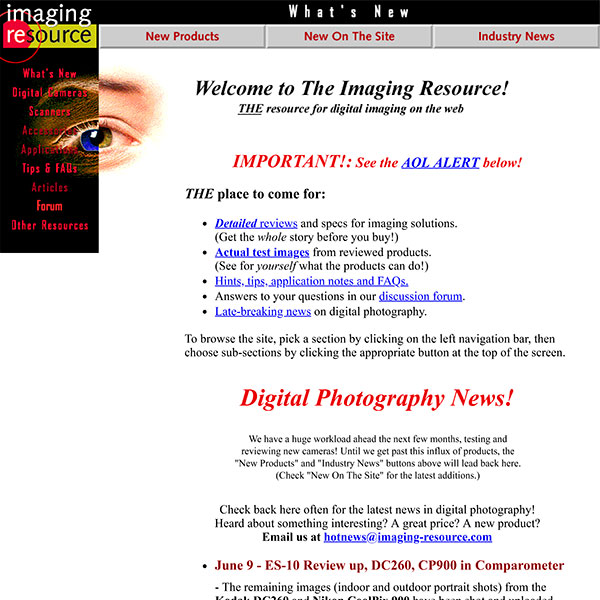
IR Prehistory
IR’s backstory reaches back to my childhood, when I had a darkroom in my parent’s basement, and probably shot and processed a mile or two of Tri-X film. I’d buy it in 100 foot bulk rolls and respool it into 35mm cartridges to save money. I’d mix Microdol-X (film developer) and Dektol (paper developer) in gallon batches, and spent hours burning, dodging and souping prints under the string of red christmas lights I used as my safelight. I’m sure the long hours in a tiny, dark room had something to do with my stunted social development at the time :-0
I was the de facto sports photographer for our high school, standing on the sidelines of basketball games (we were too small to have a football team, and soccer wasn't remotely a thing yet) with my Honeywell Strobonar and cheap zoom lens, then going home to develop and print the shots, tacking them on the big bulletin board wall outside the library the next day. I never joined the official yearbook staff, but my camera and I were everywhere, and I ended up with more photos in the yearbook each year than some of the “official” shooters.
Condensing the following years a little, I went off to college and studied engineering, worked in the Southern California aerospace business for a while, and eventually finished up with a Master’s degree in Applied Physics. (Basically the physics of semiconductors; my plan was to become a semiconductor process engineer.) Rather than process engineering, though, I ended up in image processing architecture.
Later, I started a small electronics manufacturing business with a partner, and a little after that started a computer systems integration company, selling Mac-based graphics systems to Hollywood post-production houses and prepress houses. (Prepress houses were companies that prepared the film used to make printing plates, a business that no long exists anymore, as presses have become fully digital.)
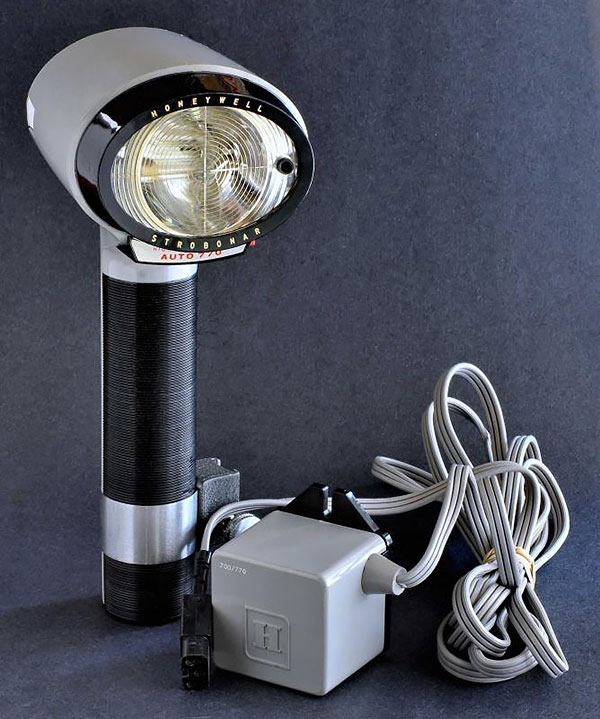
First exposure to digital photography (see what I did there? ;-)
It was here that the first seeds of IR were planted. My company did a consulting project for a huge electronics distributor, who were looking to convert their product photography from film to digital. This was the era when a 6-megapixel studio camera cost $25-50,000, so they wanted to make sure they made the right choices.
This led to my first digital camera shootout, conducted in the Hollywood studio of photographer Lee Varis, who remains a friend to this day.
We found some pretty dramatic differences between the different cameras we tested, almost certainly saving the client some serious money, relative to their first inclination.
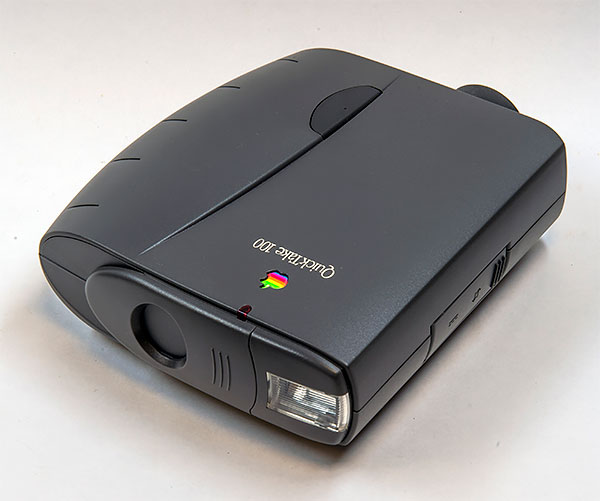
Fast-forward a couple of years, and consumer cameras started to make their first appearance. The Apple Quicktake 100 was a sign of things to come; an amazing device at the time, never mind its absolutely execrable image quality. Similar low-res cameras appeared from Kodak, Chinon, Dycam (Who else remembers them? A Dycam 10-C was the first digital camera I took on vacation with me!), Logitech and others, but all of them were more curiosities than anything you’d want to actually rely on save your memories.
But technology progressed and cameras kept getting better. By 1996, things had gone from awful to interesting, and it was clear that digital cameras had become a thing. 1997 was a real watershed year, with megapixel-resolution cameras appearing from Agfa, Epson, Fujifillm and Olympus.
The thing was, there was absolutely no way to tell how good any of them were at taking pictures, and detailed information about them was hard to find, even on the manufacturers’ own websites.
The beginning
This got me thinking: What if people could go to one website, and see standardized photos shot by all the cameras under the same conditions? That would let people see exactly how they stacked up. Likewise, we could describe all their workings and specs, so people could make informed decisions, just by visiting a single website.
It’d be a great resource for the community, an … Imaging Resource! :-)
(It’s another long story why I called the site Imaging Resource vs Digital Photography Resource or something similar, but this tale is already long enough.)
I started working on the idea of the site in late 1997, and finally launched it with the first four cameras on April 1, 1998. Those first reviews covered Olympus’ lineup at the time, the D-220L, D320L, D500L, and D600L.
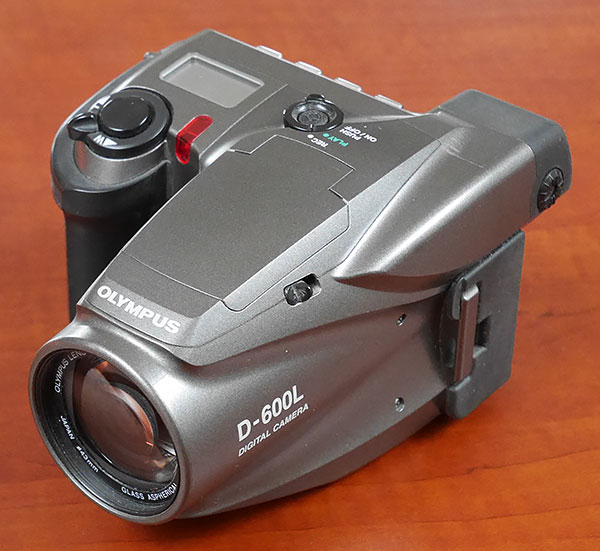
I’ll never forget what an amazing device the Olympus D-600L seemed at the time, with a maximum aperture on its 3x zoom lens of f/2.8, and (wait for it) 1.4 million pixels! Woah! I still own mine; it’s sitting on the “museum shelf” at IR Headquarters :-)
I continued on, adding more reviews as fast as I could get my hands on the cameras, shoot and review and post the results, while also holding down a full-time job as a software analyst contractor for Bellsouth Business Systems.
The fact that I was working as a contractor was great, because it allowed me to gradually ramp down my hours there as the site grew, until I was finally able to go full-time with IR in early 2000.

Today
IR has always been very much been a family business, with my wife Marti, both our boys and our two dogs involved along the way. Marti works with me to this day, handling all our bookkeeping and payroll. It’s definitely not her first calling, as she’s a PhD molecular biologist by training, but she’s patiently (and accurately!) done what’s been needed for the last 20 years. Both our sons (Arthur and Chris) have worked for us at various times, Arthur serving a nearly five-year stint managing software development for the site, and bringing us into the 20th century in terms of our software platform, version control system, etc. Arthur also wrote the graphing code that translates the DxO lens test results into the pretty 3D graphs you see on our lens-review pages. Many thanks to all my family members for their loyal, patient support through so many years of long hours and 6.5 day work weeks.
Beyond my actual family, though, the whole IR team feels like family. We’re a very close-knit group, even though half of us are spread across the US and Canada. Headquarters staff currently consists of our Managing Editor Dave Pardue, Senior Editor William Brawley, Marti, myself and our two official mascots, our dogs Charlotte and Yoshi. (Charlotte was the Amazing Frisbee Wonder Dog in hundreds of video samples over the years, but she’s sadly retired from that now, barely able to hobble to and from the office each day.) :-(
Off-site, we have Senior Reviews Editor Mike Tomkins, who lives in East Tennessee, and who’s been with me for a little over 19 years now, joining very soon after the site launched and starting writing reviews for us not long after. Zig Weidelich is our token Canadian, and also our Technical Editor / QC czar without compare; he writes all the analyses of our lab test results and is the final edit for technical content on pretty much everything we publish. His eye for detail is legendary... Jeremy Gray lives in Maine, and does a lot of our review writing these days. He’s a gifted fine-art photographer and great writer as well; a rare combo. Jaron Schneider is our West Coast/Features editor, covering a variety of subjects and contributing to our camera review work as well. He's also our designated "video guy", as he’s a self-employed video producer during the day. William Bailey manages all our server and ad-delivery infrastructure. He works remotely as well, although he lives just 30 miles or so from IRHQ. Finally Jan Prycl is our software developer, working from his home in the Czech Republic.
It’s a great team, who I’m deeply indebted to. Thanks to their efforts (and others who came before them), IR has earned an unparalleled reputation for objectivity and accuracy stretching back 20 years now. (Or two centuries, as it sometimes feels like ;-)
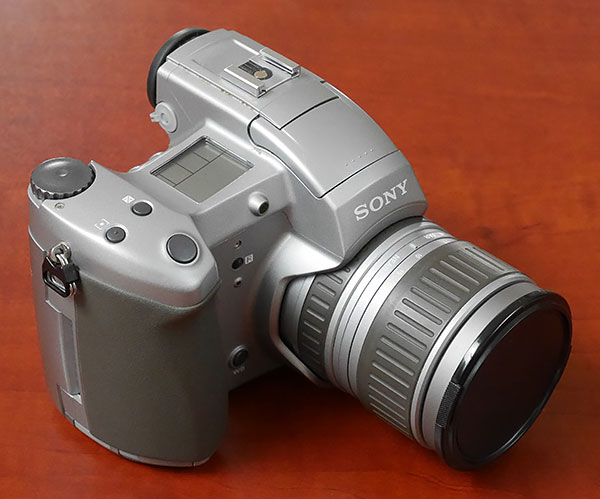
My love for the industry
IR’s story wouldn’t be complete though, without recognizing everyone who makes up the wonderful industry we’re a part of. I'm convinced that the photo industry is populated by the nicest group of people anywhere on the planet. I’ve developed many, many friendships over the years, from junior PR trainees to corporate presidents and CEOs, and have always been struck by the kindness, supportiveness and good intentions of everyone I’ve come in contact with. I couldn’t possibly ask for a better industry to be a part of!
As someone explained to me very early on (Jon Sienkiewicz, VP of Minolta US at the time), the photo industry is different, because everyone is united by a common passion. As he said, “people don’t go into appliance sales because they have a passion for refrigerators”. By contrast, most of the people in the photo business are here because they love photography. It’s also a pretty happy industry, focused on creating beauty and capturing memories. There are certainly some darker areas in photojournalism and documentary photography, but the vast majority of the time, photography is about happy things. I think that spills over to everyone who works in the industry; it's a genuinely nice business to be involved in.
Whatever the reason, the people in the photo business are some of the nicest I’ve ever encountered, and I’m profoundly grateful for the friendship and support of so many of them through the years.
Our amazing readers
The ultimate source of our success, though, is our readers, you who are reading this now, and the literally millions of others before you. You’re the reason we exist, the focus of everything we do. It’s your enthusiasm and support that keeps us going, and it’s you we think of when we’re grinding out the latest new-product announcement at 2am. I can't possibly thank you all enough for your support, and thanks especially to those who’ve taken time to send kind words of appreciation from time to time; you have no idea how much that means to us, what a difference it makes.
So thanks to everyone, for an amazing, wonderful 20 years; here’s to the next decade!
- Dave Etchells
(Hey, readers, what do you remember about the good old (ancient) days of digital photography? When did you go digital, what was your first digital camera? Any experiences to share? When did you finally realize that you didn't need film anymore? - Please tell me I'm not the only one among us who remembers digital photography in 1998! :-0 )